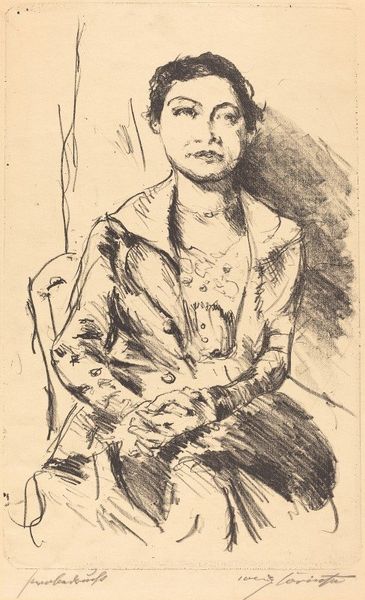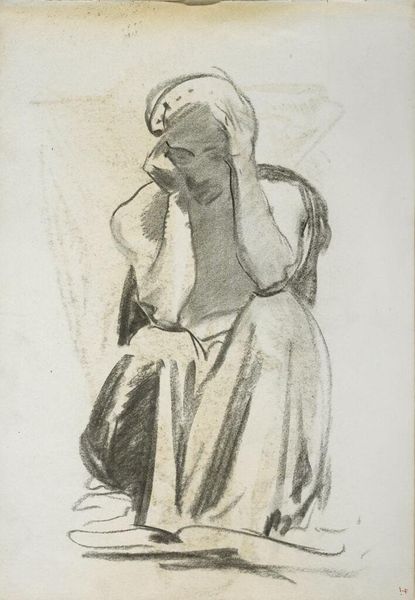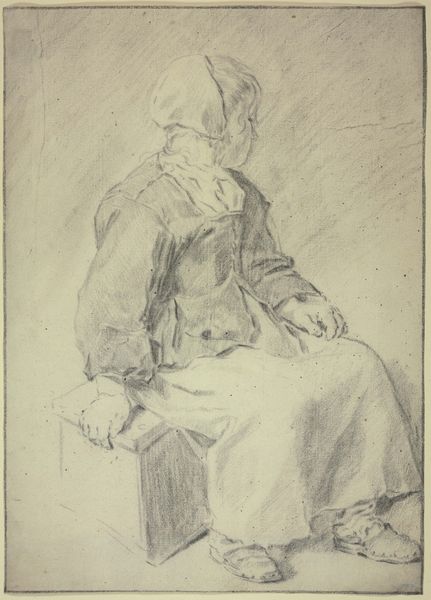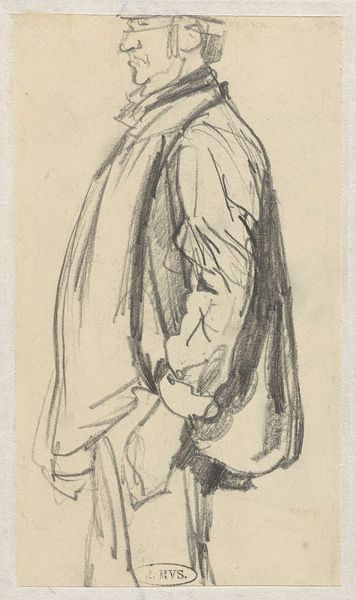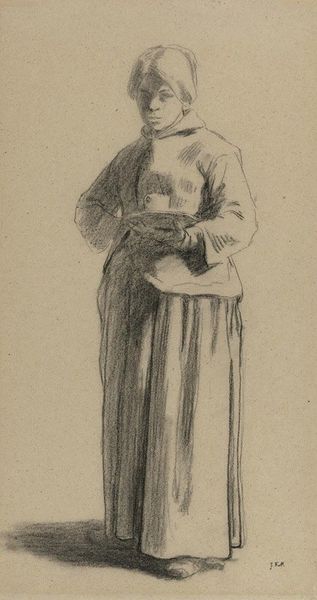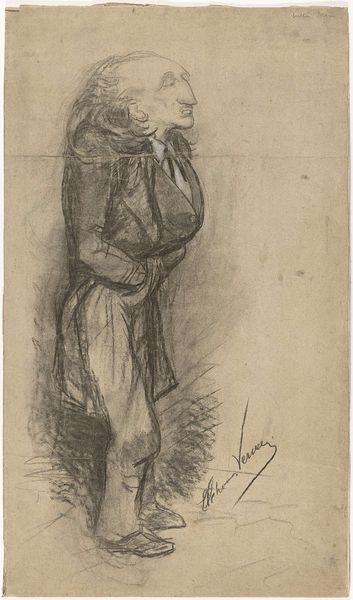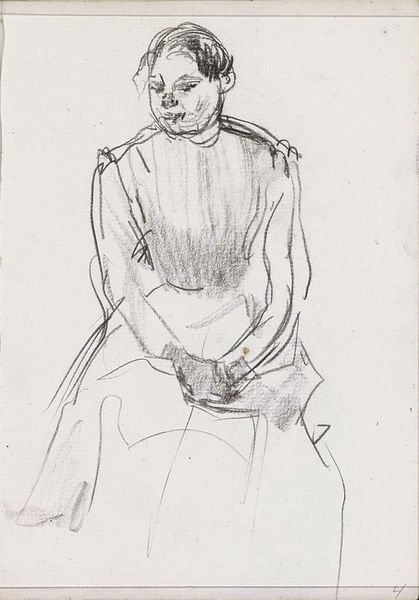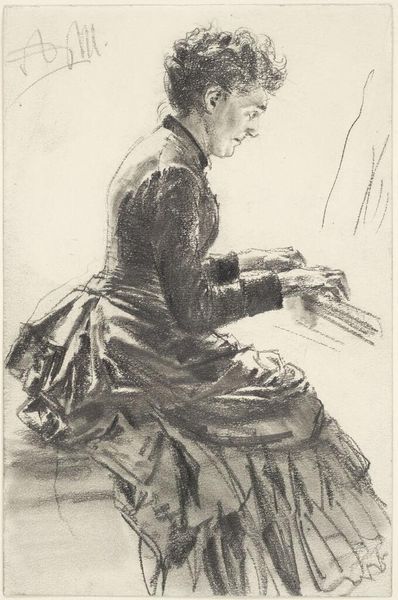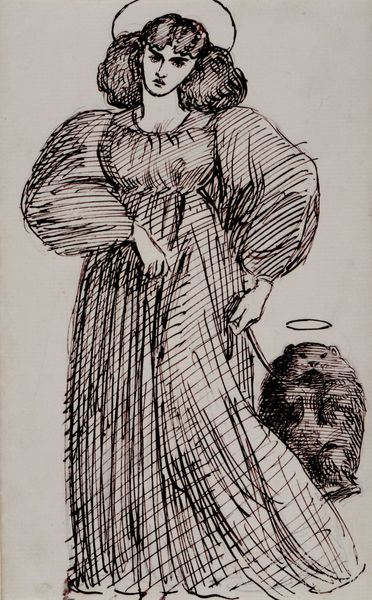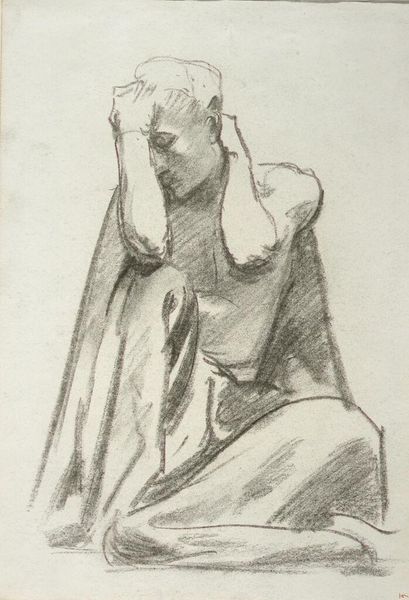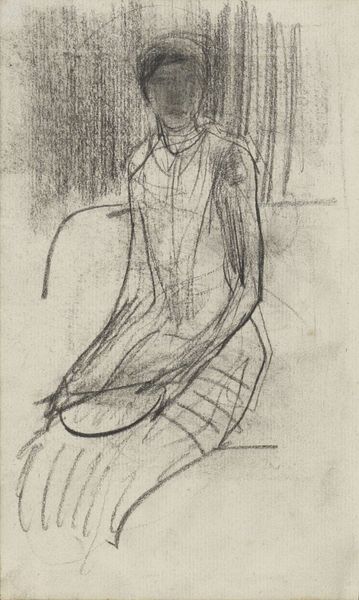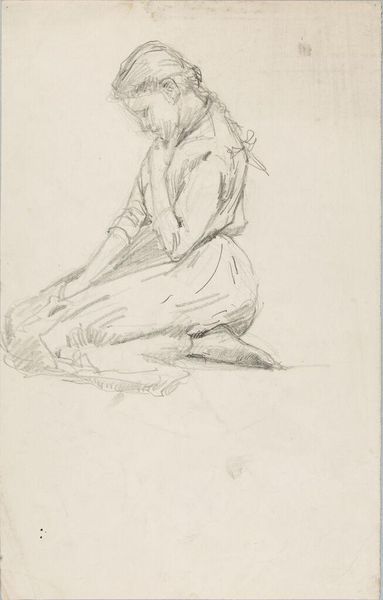
drawing, pencil
#
portrait
#
drawing
#
pencil sketch
#
charcoal drawing
#
pencil drawing
#
pencil
#
portrait drawing
Dimensions: height 325 mm, width 182 mm
Copyright: Rijks Museum: Open Domain
Curator: Looking at this moving drawing, completed between 1848 and 1865 by Diederik Franciscus Jamin, titled 'Waals weesmeisje, zittend naar rechts', my first impression is one of quiet introspection. There is a palpable sense of contemplation in the subject's posture. Editor: Indeed. And given the piece's title, this "Waals Orphan Girl, Seated to the Right," the pose, to me, conveys the weight of institutional life and perhaps a restricted future. What I find compelling is the subtle detail within what might initially appear as a simple sketch executed in pencil. Curator: Exactly. I read the delicate rendering of the young woman's traditional cap and shawl as visual indicators of the social structures that defined her existence. Orphanages such as these, while offering shelter, often served as a means of controlling and standardizing the lives of vulnerable girls. We need to see her portrait in terms of identity formation within institutional parameters. Editor: Certainly. Her attire speaks volumes about her position in society. The visual representation reinforces social divisions. Beyond that, I wonder about the choice of the medium. The use of pencil suggests both accessibility and perhaps, the artist's interest in capturing fleeting moments, almost documentary in its feel. Was it commissioned or a work born of social awareness? Curator: Those are important questions. And it seems we can dig deeper into the intersectional identities at play here; we need to remember gender, class and vulnerability play important roles here in understanding the image. Consider how the act of depicting a marginalized individual through art serves to bring visibility but could simultaneously perpetuate stereotypes or romanticize hardship. The tension between documentation and exploitation is ever-present. Editor: Absolutely, and perhaps this work encouraged philanthropists or reinforced biases - it becomes necessary to investigate archives from that time to interpret it through political and social views, even now. And let's think of exhibition practices; these images might have been presented at charity fairs, generating a complicated form of spectator interest that is removed from contemporary ethics. Curator: Reflecting on that intersection then, for me, the drawing acts as an intersection between past practices and current conversations about representation, poverty, and institutional care. We see the complex realities embedded within simple visual forms and prompts, hopefully, meaningful dialogue about historical inequalities and visual responsibility. Editor: Yes, after our analysis I view the art through different critical lenses, acknowledging that it carries intricate visual history with cultural consequences far beyond its materiality.
Comments
No comments
Be the first to comment and join the conversation on the ultimate creative platform.
